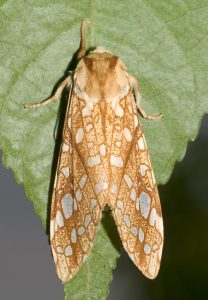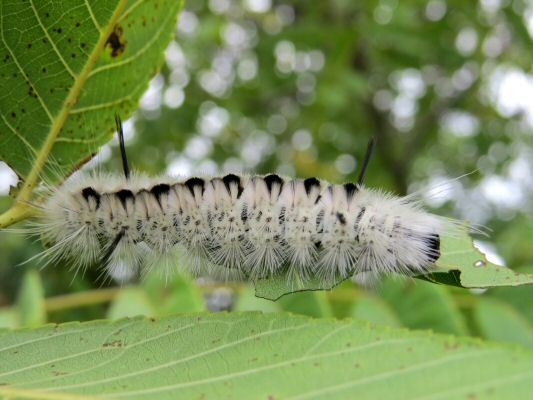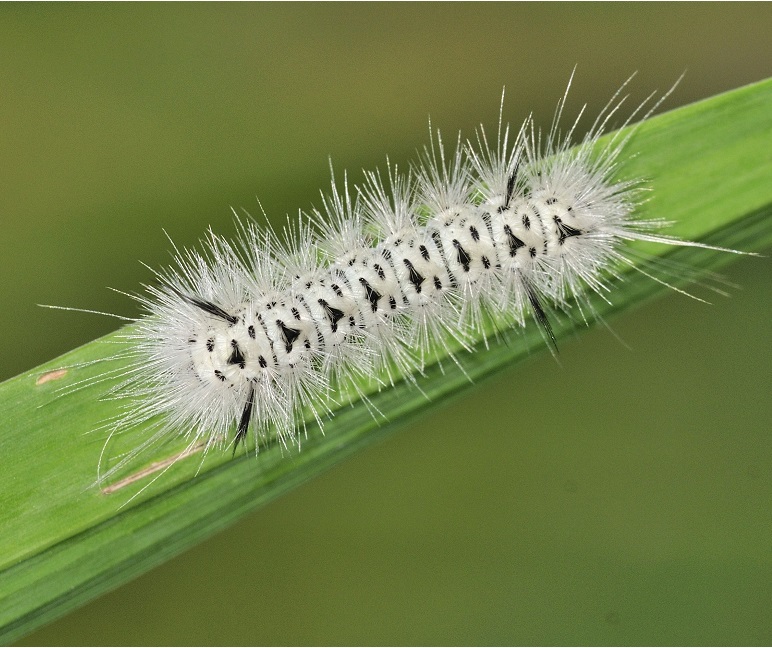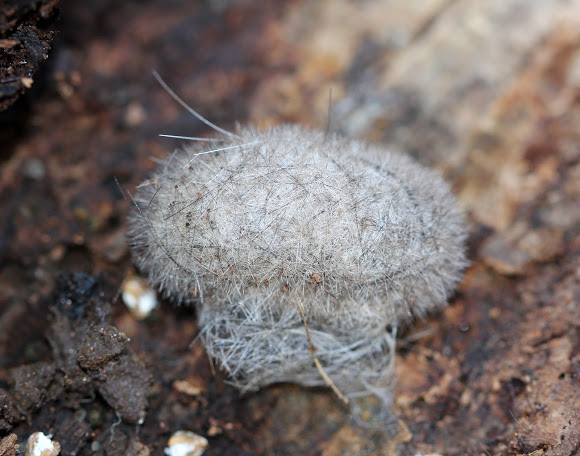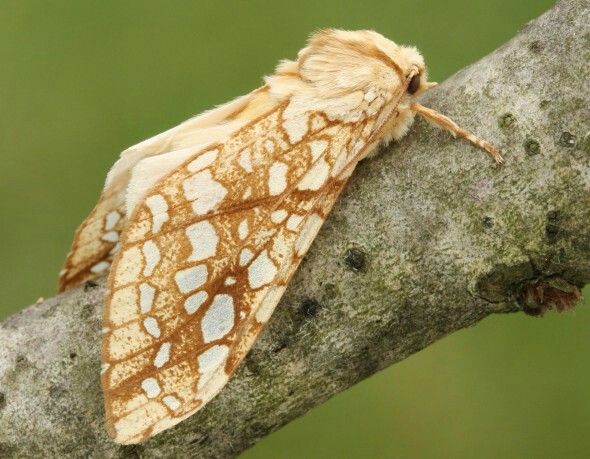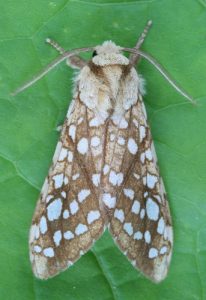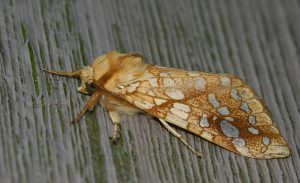Hickory Tussock Moth (Lophocampa caryae)
Hickory tussock moth of the tiger moth clan widely occupies the eastern parts of North America. One of their key attractions is the white blotches on their body, making them look all the more attractive. The hickory tree is one of the primary host plants of this species that has resulted in their name.
en.wikipedia.org
Scientific Classification
- Family: Erebidae
- Genus: Lophocampa
- Scientific Name: Lophocampa caryae
Description and Identification
Caterpillar
When hatched, the caterpillars look fuzzy, with a white body and tufts of black hair on their back, alongside black spots to the side. Four long hair pencils, black, are also present, two in front and two behind. They grow to 4.5cm long, and one can spot them between July and October. When young, they occur in groups of approximately 100, while older ones live a solitary life. Besides hickory, they feed on elm willow, oak, and ash, going to the extent of skeletonizing the leaves.
Adult Moth
Sexual Dimorphism: Not prominent
Color and Appearance
Forewings: When opened, the forewings appear yellowish-brown, marked with rows of white translucent splotches. When closed, the pattern remains the same, with a lesser number of spots visible.
Hindwings: When opened, they are cream to pale yellow without markings, though dark brown veins on its upper end and faint spots can be seen. When closed, one cannot view the hind wings.
On the whole, they have a pale and hairy body.
Average Wingspan: 3.7 – 5.5 cm
Flight Pattern: Not recorded
Season: May – June
Eggs
The female lays eggs on the leaves’ undersides in clusters of about 100 or even more than that.
Quick Facts
| Other Names | Hickory tiger moth, hickory hallisidota, white hickory tussock moth (as the larva is called) |
| Distribution | Northeastern parts of North America touching the regions of Maine, New Brunswick, North Carolina, Wisconsin, Illinois, and also even Texas, and Mexico to the southwestern end |
| Habitat | Near deciduous forests, streams, rivers, and everywhere else where their host plant grows |
| Predators | Birds, bats, amphibians, lizards |
| Lifespan of Adults | Not recorded |
| Host Plants | Hickory, walnut, pecan, oak, elm, willow, ash |
| Adult Diet | Do not feed though they are equipped with mouthparts |
Did You Know
- The spotted appearance on their body is similar to stained glass.
- The hickory tussock moth larvae have bristles throughout, resulting in itchy rashes and swelling in humans if they touch it or are stung by it. However, reports of severe medical complications are rare, though.
- They are not poisonous to dogs but could lead to allergies and irritation if swallowed.
Scientific Classification
- Family: Erebidae
- Genus: Lophocampa
- Scientific Name: Lophocampa caryae

